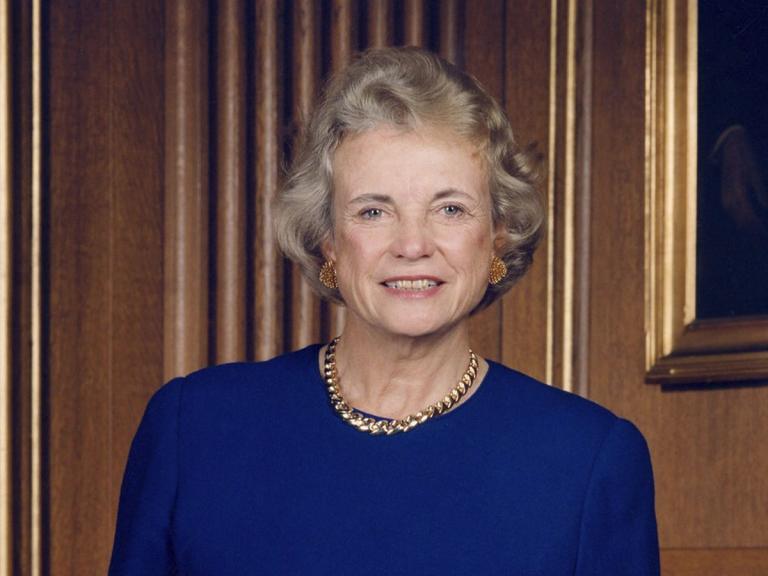
Sandra Day O’Connor, the first woman to serve as a justice on the U.S. Supreme Court, has died at 93 years old. According to a statement from the Supreme Court, O’Connor died in Phoenix, Arizona, “of complications related to advanced dementia, probably Alzheimer’s, and a respiratory illness.”
O’Connor was appointed to the court in 1981 by President Ronald Reagan and served nearly a quarter-century before retiring in 2006. She was replaced by Justice Samuel Alito, who in 2022 wrote the majority opinion overturning a federal right to abortion that had been protected for decades by the cases Roe v. Wade and Planned Parenthood v. Casey. O’Connor co-authored the majority opinion in the latter decision, which Alito blasted for having “enflamed debate and deepened division” in the United States.
In late 2018, she stepped back from public life after having issues with her short-term memory, her family said at the time. In a statement released by the court, Chief Justice John Roberts said, “A daughter of the American Southwest, Sandra Day O’Connor blazed a historic trail as our Nation’s first female Justice. She met that challenge with undaunted determination, indisputable ability, and engaging candor. We at the Supreme Court mourn the loss of a beloved colleague, a fiercely independent defender of the rule of law and an eloquent advocate for civics education.”
He concluded, “And we celebrate her enduring legacy as a true public servant and patriot.” During her tenure, O’Connor was joined on the nine-member Supreme Court by the late Justice Ruth Bader Ginsburg, who was appointed by President Bill Clinton in 1993. Before O’Connor died, Ginsburg was the most recent justice to have died, in September 2020. O’Connor inspired generations of female lawyers – including the five women who served after her nomination on the high court.
They admired her path, marking success in a field that men had dominated. Over time, she became known as a moderate conservative and often the swing vote on hot-button social issues. Growing up on the Lazy B Ranch in Arizona, O’Connor was known for her self-reliance and independence, traits she acquired as a young woman branding cattle, driving tractors, and firing rifles. “She has shown time and time again that she is a true cowgirl,” the late Justice Ruth Bader Ginsburg said of O’Connor in a tribute in 2015.
A graduate of Stanford University, she went on to study at Stanford Law School, where she met and dated –for a time—her classmate, the late Chief Justice William Rehnquist. She would go on to marry another classmate, John O’Connor. Upon graduating, she was turned down by law firms because of her sex. Eventually, she started her own firm with her husband. Later, she served as an Arizona state senator and the first female majority leader. She was a judge of the Maricopa County Superior Court and, in 1979, the Arizona Court of Appeals.
After leaving the high court and before her own diagnosis, O’Connor became an advocate for Alzheimer’s disease. She also launched a website dedicated to encouraging young people to learn civics. Her husband died in 2009, and she leaves behind three sons.
O’Connor was well aware of the symbolism of her place in history as the first female justice. “Let me tell you one reason why I think it’s important, and that is for the public generally to see and respect the fact that in positions of power and authority, that women are well-represented,” O’Connor said in a 2003 interview with CNN. “That it is not an all-male governance, as it once was.”
